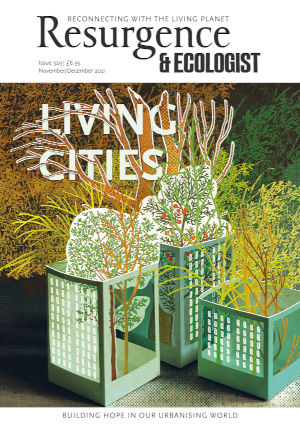In the fight against climate change, every sector counts. But one of the most everyday yet highest-impacting has typically been overlooked – the buildings all around us. Supporters of a low-carbon built environment are hoping that COP26 will change this, as the official programme includes a whole day on cities, regions and built environment.
Buildings account for 40% of carbon emissions, and 50% of all extracted materials. By 2050, the world’s building stock will almost double, and almost 70% of the global population is projected to live in urban areas. Global material use is expected to more than double, with a third of this attributable to materials used in building and construction.
The built environment is also vital in the adaptation question – 1.6 billion urban dwellers will be regularly exposed to extreme high temperatures by 2050, and over 800 million people living in more than 570 cities will be vulnerable to sea-level rise and coastal flooding.
Yet the issue has only once before had the spotlight in the thematic programme of the COP, at Paris in 2015, according to Victoria Burrows, director of advancing net zero at the World Green Building Council (WorldGBC).
In recognition of the urgent need to raise awareness of the importance of the built environment to both mitigate and adapt to climate change, the WorldGBC, the C40 Cities Climate Leadership Group, Global Alliance for Building and Construction, the Resilience Shift and the World Business Council for Sustainable Development (WBCSD) launched #BuildingToCOP26 to promote radical collaboration ahead of the dedicated day in Glasgow.
The coalition has specific outcomes in mind, for both the COP and beyond. It wants the sector to halve its emissions by 2030 – with 100% of new buildings net zero in operation, widespread energy efficiency retrofit of existing assets under way, and reductions in embodied carbon of at least 40%.
By 2050, all new and existing assets must be net zero across the whole life cycle, including operational and embodied emissions. The coalition also wants resilience to be built into cities and buildings to help urban populations and vulnerable communities adapt to climate impacts.
To achieve this, awareness of the vital role the sector plays in decarbonisation must be raised significantly. Under the Paris Agreement, all signatories must submit national-level climate-change strategies, known as Nationally Determined Contributions (NDCs), to the UN.
Yet out of 186 NDCs submitted, 136 mention buildings, but only 53 refer to building energy efficiency, and 38 specifically talk about building energy codes, which help ensure buildings use energy efficiently, according to the WBCSD.
The coalition also flagged up that most NDCs do not include full building decarbonisation targets, and areas such as building materials are under-addressed. This lack of awareness of the impact of buildings on the climate is reflected in the fact that less than US$3 of every US$100 spent on new construction currently goes to efficient buildings.
The built environment sector is keen to demonstrate how buildings can deliver in other areas that impact on climate change, such as energy, transport and Nature. “Buildings are a connector between all of these other themes, so we’re really keen to show how the sector can support delivery across them,” Burrows said.








